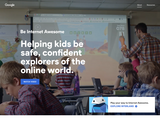
Teaches kids the fundamentals of digital citizenship and safety.
- Subject:
- Applied Science
- Computer Science
- Information Science
- Material Type:
- Lesson
- Author:
- Date Added:
- 11/03/2017

Teaches kids the fundamentals of digital citizenship and safety.
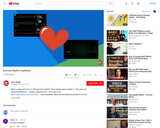
Beat versus Rhythm This lesson shows the difference between beat, like a heart beat, and rhythms. This video also gives examples.
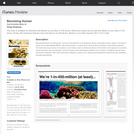
Becoming Human is a fast-paced, irreverent introduction to evolutionary theory, especially human origins. The book is based on the Open2Study MOOC, 'Becoming Human,' created by Dr. Greg Downey and Open Universities Australia. The book discusses traces of evolution in our bodies, basic evolutionary theory from Darwin to the genomic revolution, sexual selection and reproduction, and how human brain development affects our evolution, including into the future. Copiously illustrated, with some interactive diagrams, videos of Dr. Downey presenting the material are also available through Open2Study.
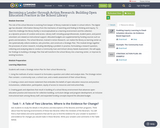
The role of the school librarian is evolving from keeper of library materials to leader in school reform. The digital age has elevated information literacy from the mechanics of searching and finding to thinking and inquiry. To meet this challenge the library facility is reconceptualized as a learning environment and the collection as a dynamic process of curation and access. Library staff, including paraprofessionals, student peers, and parent volunteers are viewed as instructional support. Allocated budgets are supplemented by funding sources such as grants and donations. The school librarian, trained in Action Research, can realize the library as learning center as she systematically collects evidence, sets priorities, and constructs a Strategic Plan. This module brings together the processes of action research, including identifying a problem in practice, formulating a research question, collecting and analyzing data to conduct a Community Scan and School Library Needs Assessment. She will apply her findings to building a Strategic Plan that will transform the school library into a learning center, or improve its existing functions.
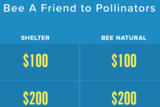
This interactive game is a great assessment tool for the Bee A Friend to Pollinators lesson. Easy for educators to use in the face-to-face and digital classroom.
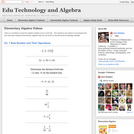
Visually searchable database of Algebra 1 videos. Click on a problem and watch the solution on YouTube. Copy and paste this material into your CMS. Videos accompany the open Elementary Algebra textbook published by Flat World Knowledge.

There are PBIS cards that get progressively harder to fill to earn a reward.
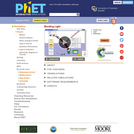
Explore bending of light between two media with different indices of refraction. See how changing from air to water to glass changes the bending angle. Play with prisms of different shapes and make rainbows.

These are photographs of the historic Pearson House in Keosauqua, Iowa. Image resolutions of lower value can be downloaded for free.
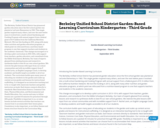
The Berkeley Unified School District has pioneered garden education since the first school garden was planted at LeConte Elementary in 1983. This single garden inspired many others, and over the next twelve years it evolved into a multi-school Gardening and Cooking Program with annual support from a federal grant of $1.9 million from the California Nutrition Network. We lost this funding in 2013, along with many other nutrition and garden education programs, at which point we refocused from a nutrition-based program to one that supports teachers and students in the academic classroom.
This change encouraged us to develop a pilot curriculum in 2013–1014, with support from teachers, garden educators, and consultants from the Edible Schoolyard, Berkeley. Our team of experts gleaned from existing lessons and research to synthesize drafts to best fit our own school gardens. We rewrote the pilot lessons with input from our school communities and with incredible support from P. Rachel Levin, an English Language Coach, to develop academic and health targets accessible to all of our students.
The curriculum builds upon many years of educating our students in the garden and scales up content across grades and lessons for instructional scaffolding. It is designed as an interactive teaching tool to be co-taught with classroom teachers and garden instructors as leads. Each lesson connects directly to standards: Next Generation Science, Common Core State, Physical Education, and Environmental and Health Education. Our concise and easy-to-follow lessons are a packed 45 minutes for preschool through fifth grade. Flexibility is important to us, so some lessons include several activities that teachers can choose from to accommodate their lesson plans. Consistency is also important, so we follow themes and lesson structure found in the Curriculum Map.
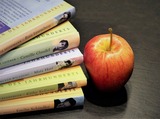
Students will discuss the definition of a biography and determine what elements it contains. They will research a famous person and create a web graphic organizer with key achievements and personal information from their life. Peer feedback will be given on the web creation and then an oral presentation will be given.
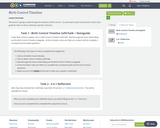
This lesson is going to walk through the timeline of birth control. You will need to print out the birth control note guide for them to fill out while the read the SoftChalk.
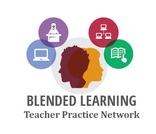
In this online learning module, you will: 1: Understand blended learning models2: Learn to design blended learning experiences
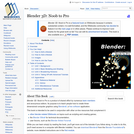
Blender 3D: Noob to Pro is a product of shared effort by numerous team members and anonymous editors. Its purpose is to teach people how to create three-dimensional computer graphics using Blender, a free software application. This book is intended to be used in conjunction with other on-line resources that complement it.
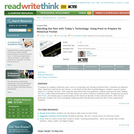
To prepare for literature circles featuring historical novels, students research the decades of the 1930s to the 1990s and share their information using Prezi, a web application for creating multimedia presentations.
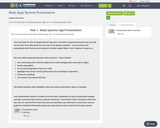
This is the final task of the Body Systems App unit. It is the presentation task.

In the Body System Amusement Parks project, students team up to create amusement parks based on the various systems and organs within the human body. With the power of abstraction, each attraction represents the cardiovascular system, the muscular system, the digestive system, etc. Teams create both 3D scale models and presentations to an unnamed wealthy investment firm looking to build a new park in the students’ very own town. This activity was heavily inspired by a post from Danielle Dace.
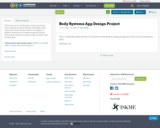
This lesson ties in our 7th grade science curriculum where students study the Systems of the Body. It also looks at how these systems function in relation to athletics. Students are to design an app that looks at these systems and how an app can help an athlete train for their sport.
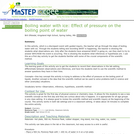
This guided inquiry activity, in which ice is used to boil water in a Florence flask, works well in the introductory class to a chemistry or physical science course. The students will learn the difference between observation and inference and apply this understanding to various other situations in which observations and inferences must be made. The students will also use outside sources to try to explain why the activity worked.
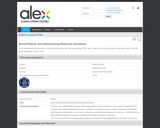
In this lesson, students will examine electronegativities of atoms relative to one another to determine if a covalent bond will be classified as polar or nonpolar. Students will use an online simulation to help them understand the importance of lone pairs of electrons as well as bonding pairs of electrons. Students will use ball-and-stick models to examine and identify the shapes of various molecules. This lesson results from a collaboration between the Alabama State Department of Education and ASTA.